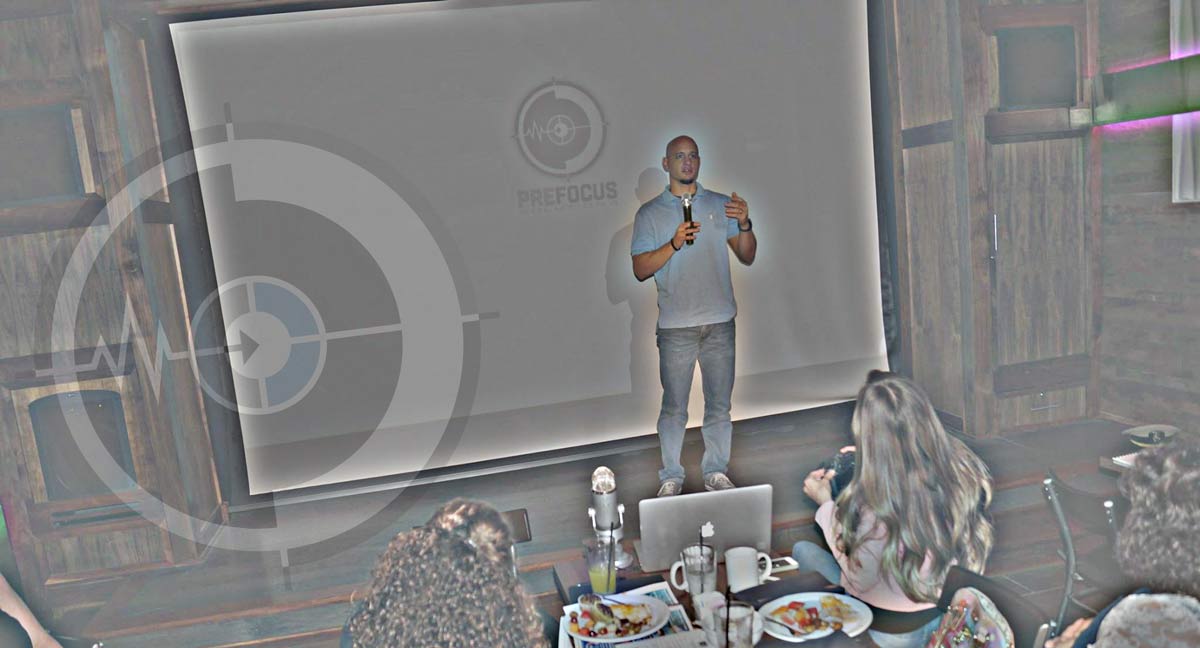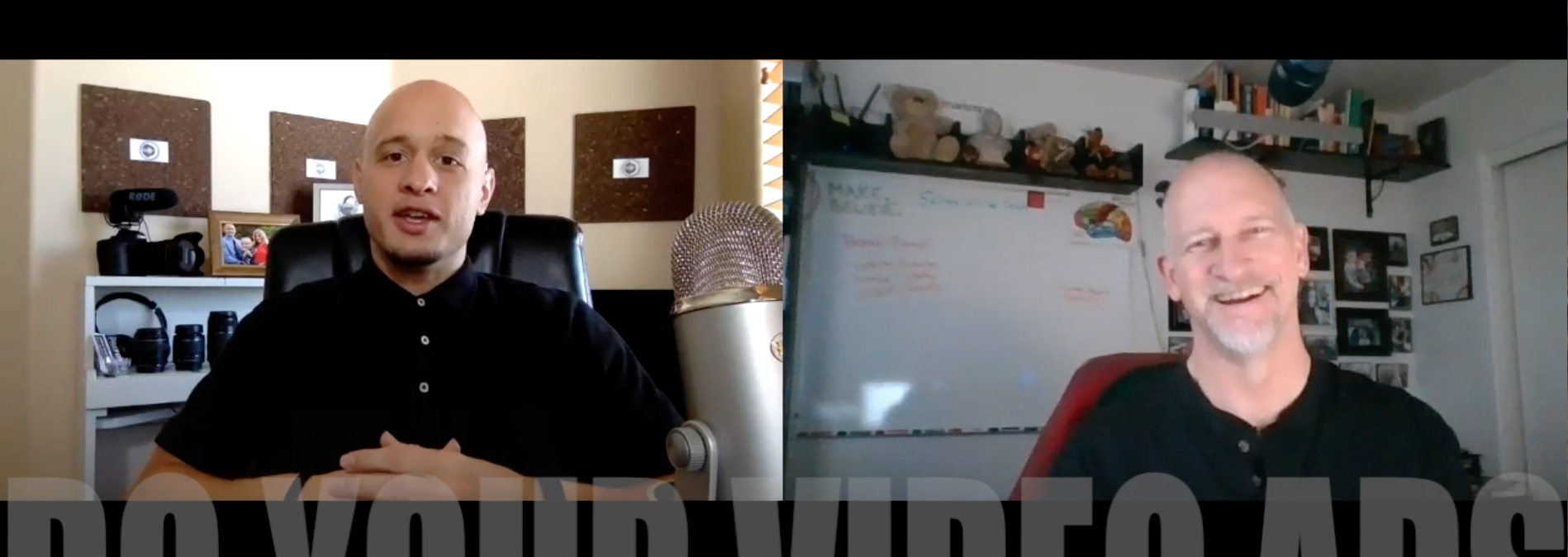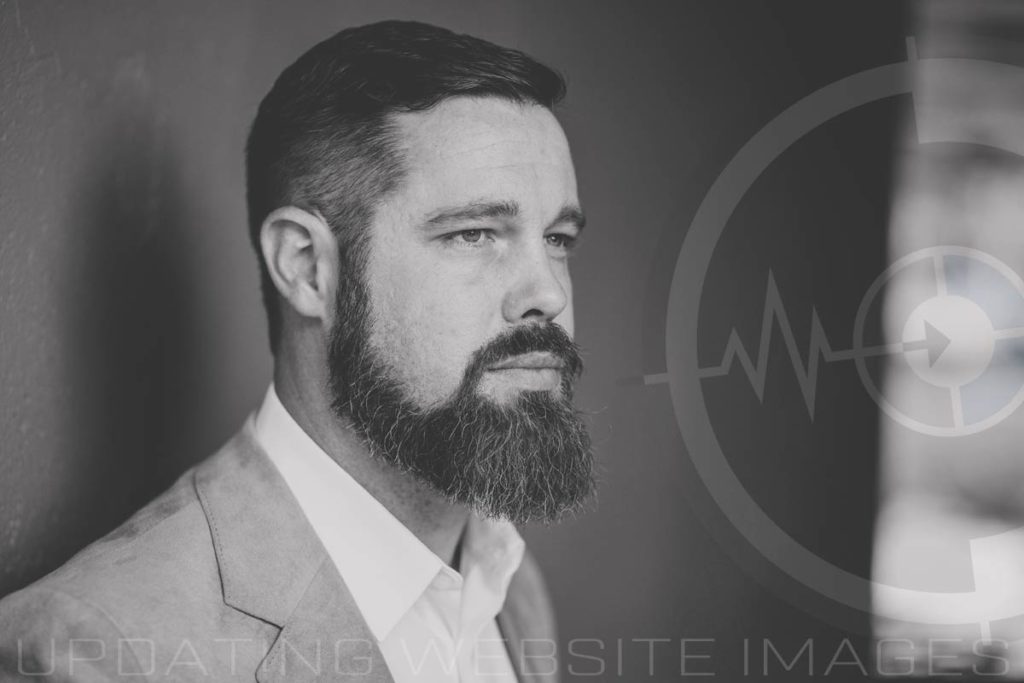Dec 8, 2022 | blog, Branding, consulting |

Now that I’m situated quite well just south of Memphis, I’d like to start talking about the effort I’ve put into my branding workshop. Helping business owners enhance the way they present and position themselves is an absolute passion of mine. Since 2007, I’ve been banging the table over authenticity. The problem is, many business owners just don’t understand the value of seamless brand identity. They simply want to hire an aggressive marketer that can drive immediate sales. But a long term return is far more rewarding.
Not only does a quality developmental process improve company certainty, but also the way the brand is perceived. Consistency and intention speak louder than sales pitches, So, if you’re in the market for a guest speaker or a detailed branding workshop, I’d love to help! Although I’m hesitant to share the details of my process, I’m hoping this outline inspires other marketers to be more creative with their clients. At the end of the day, I’m tired of fixing low quality campaigns and concepts. Business owners deserve better.
No matter who I’m presenting to, we have to go over the basics. If you have any questions or comments, please shoot me an email!
What is Branding, Exactly?
- Business Dictionary says..
- Entrpreneur.com says..
- To me, branding is every identifying element of the business – How it looks, acts, communicates and responds to the market/consumers and makes them feel.
What are the Four Keys to Quality Branding?
- Authenticity – who you truly are, your values, competencies and promise.
- Relevancy – making sure what’s important to customers is visible to them.
- Consistency – staying true to your identity on all channels so you’re recognizable.
- Commitment – keeping promise(s) by training & enforcing standards for employees.
Why it’s Important to Understand Ideal Customers.
- Branding is responsible for speaking to your target audience in every way.
- It’s easier to develop (a) promise(s) when you know how customers think, feel and desire.
- Branding is meant to streamline your marketing efforts with cohesion in mind.
- If you want a loyal following, you must know how to garner their trust.
- Reaching outside of your audience is wasteful and impacts perceived value.
How To Get Started on Customer Personas:
- What are the stated wants and needs of your target audience?
- How do you plan on serving them?
- How is competition addressing these?
- What are the hidden wants and needs of potential customers?
- How do you plan on serving them?
- Is any other company leveraging these?
- Identify demographic, geographic, behavioral and attitudinal characteristics.
- Create 3-5 specific personalities that you’d like to target.
- Create 3-5 specific personalities that might be interested in you
- No matter what you do as a brand, cater to these ideal personas.
How to Define Your Branded Culture:
- What exactly does culture mean? Harvard has an interesting take.
- (?) What does brand culture mean to you?
- How do I see brand culture in today’s marketplace?
- Determine the answers to these questions:
- (?) How do you define and describe leadership? Stakeholders?
- What qualities and characteristics are you looking for to lead your brand?
- Who are your ideal partners or charitable organizations and why?
- (?) What types of employees are you looking to target and why?
- (?) What does a “moldable” employee look like to you?
- How will you communicate brand standards (Ie: on-boarding and every touch point)?
- How might you implement and enforce new standards in an outdated culture?
- Who can you identify to monitor brand standards (champion, advocate, cheerleader)?
- (?) What could you achieve with a precise hiring process, shared vision and purposeful culture?
The Actual Elements of a Brand.
- (?) What is the first thing that comes to mind when you think of branding?
- (?) What do you think are the key elements of a brand? Most important?
-
- Brand Values and Drivers.
- Why you started statement? Your purpose and origin story.
- What event actually caused you to get started?
- What are you looking to uphold? What’s your true intention?
- What do you plan on doing differently? How’s it benefit the customer?
- What is your core promise to the market?
- (?) How do you know if the “promise” you’re making is the right one?
- Case studies
- Market research or complaints by competitors
- Where does opportunity exist and why?
- Questionnaires/poles
- Post purchase surveys
- This section comprises your company overview, vision and mission statements.
- Brand Identity or Company Personality.
- Human-like characteristics that define value and provide clarity.
- Something original and authentic that direct consumers can relate to.
- Ask yourself if you’re branding an expertise or a definitive value?
- (?) Try to give your business 3-5 unique adjectives. Do you know?
- Sincerity, ruggedness, excitement, competence, and sophistication.
- (?) Does your brand persona makes sense or align with provisions?
- Making sense (or meaning something) to you doesn’t always resonate.
- Good Example: Michael Kors.
- Upper class, glamorous, and trendy.
- Promotes products at aspirational events, landmarks or moments
- Bad Example: Uber
- No connection with users and only drove home a need.
- The face of the brand was a jerk – like they’re Pacman logo suggested.. Eek!
- Why is a Brand Identity or Persona Important?
- It keeps all marketing and sales channels cohesive – saves money.
- Creates clarity and allows people to identify with a business.
- Many people will support you subconsciously because they can relate.
- An identifying persona enhances recognition (talk about that shortly).
- Knowing who you are streamlines design elements and messaging.
- Making a Brand Name for Yourself.
- Reflect values and purpose
- Create association with the brand persona
- Easy to say and understand
- Unique and memorable
- Before solidifying, communicate name with associated value and purpose.
- Ask for feedback
- How to Create Tag-lines and Slogans.
- What is your definitive value proposition or best promise?
- How can you formulate it in a unique and simple way with clarity?
- What type of jingle, verbiage or tempo would intrigue an ideal customer?
- Think it through as most brands don’t solidify these right away.
- Understanding a Brand Style Guide.
- Everything discovered above should be considered.
- Ie: Sincerity, ruggedness, excitement, competence, and sophistication.
- Color Palette
- Featured color, secondary color, etc..
- Visual combinations.
- Typography
- Which fonts communicate your brand personality best?
- Accessibility for designers and web developers.
- Logo Design
- Consider what the brand stands for.
- Even if it’s meaningful to you, it needs to make sense to customers.
- If ever in doubt, ask for feedback and keep it simple.
- Determine specifications, uses, lockups and save all files.
- Unique Characteristics, Icons and Additional Identifiers (abbreviations).
- Writing Style and Tone of Voice.
- Informative, educational, authoritative, encouraging, direct, etc..
- What is the main purpose of content (end goal)?
- Will you use different voices for different purposes?
- Who would narrate a commercial or radio ad and why?
- What are common words you’ll use throughout communication?
- Good and bad examples.
- Imagery and Illustration Guidelines.
- Editing style (black and white, high contrast, colorful, etc).
- Perspective (panoramic, 1st person, etc).
- Image graphics and colors (placement and sizing).
- Print Design Layouts or Templates.
- First impressions like business card designs.
- Brochure/flier guidelines, letterheads and marketing materials.
- Large format printing and banners.
- Digital Design Elements.
- Website design, purpose and functionalities.
- Email templates
- Social media style guides
- Media guidelines, titles and graphics
- Product Packaging
- Functional role
- Messaging and reasons to believe
- Personality embodiment
- Employee Wardrobe and Presentation.
- ID’s and branded attire.
- Dress code or boundaries for wardrobe liberties?
- Are you looking for strict cohesion or individuality?
- Store Design and Customer Experience.
- Flow of the experience and outdoor specifications.
- Ideal features, possible concepts and customer input.
- Consider every touch point, even the online experience.
- (?) What can you do differently to establish a memory?
Brand Awareness and Driving Recognition.
Before diving into a marketing strategy for an established brand, we have to understand every phase of the customer cycle.
-
- General Awareness
- Needs Recognition
- Informational Search
- Evaluating Alternatives
- Purchase
- Post Purchase
From here, we can start to uncover the ideal position. But first, let’s talk a little bit about promotability. You can’t just assume every consumer will salivate over your business.
What is Brand Recognition?
- Being known or recognizable through a design, voice, jingle, imagery, icon, character, etc..
- Example: “Nationwide is on your side.” Nike can be any color combination. Pillsbury Dough Boy.
- Brands can also be known for quality, reputation, reliability, consistency, good time, etc.
The Benefits of Brand Recognition:
- Peace of Purchase – people buy from a known/trusted source. Price isn’t as important.
- Known for Value – consumers understand who you are and why you are. Clarity.
- Recruiting Talent – people are drawn to a household name. Better options.
- Lower Turnover – employees tend to want to be a part of a recognized entity.
- Support Esteem – easier to attract partners/sponsors. Sought after more.
- Lower Spending – loyal customers don’t need to be marketed to as much.
How to Communicate Your Brand Promise(s).
- Now that everything is solidified, you must determine how to market the brand.
- Why do you want to communicate?
- Make an announcement or recap
- Discuss about features or benefits
- Promote something in the future
- Expand on or reinforce brand promises
- Build tactful awareness by stating facts or promoting data.
- What Are Your Brand Drivers?
- Functional – The basic job the brand does.
- Emotional – How the brand can make people feel.
- Economical – How the brand saves time or money.
- Self Expressive – How the brand makes users appear to others.
- Societal/Environmental – How the brand impacts both.
- What Does Your Positioning Strategy Look Like?
- Short term is more tactful with clear value propositions.
- Long term is more strategic towards awareness and loyalty.
Rebranding Preview
- Normally takes care of all the steps you’ve initially missed.
- Many specialists do this for design elements despite a deeper rooted issue.
- Rebranding is more difficult, frustrating and expensive..
- Re-implementing standards for clients and employees.
- Updating designs and reprinting – wasted spend.
- Reconfiguring the workplace, implementing new standards or procedures.
- If perception and image are ruined already, will a makeover even work?
- Most designers will not be honest about this.
- If you’re investing in a rebrand for the wrong reasons, the cycle will ensure.
- Start from the ground up and it’ll all come together in confident fashion.
Quality Branding Workshop and Training Events.
Since I launched my business back in 2016, I’ve been passionately trying to educate business owners on the perks of a sound strategy. No matter how you look at it, perceived value always depends on a sensible brand identity. Building one takes a lot of work. But for those of you that are committed to the process, and essentially your customers, it’s well worth it in the end. Just remember, clarity and certainty are everything.
If you ever want to spitball about your brand and it’s position in the marketplace, let me know! I’m always up for a good conversation and your first consultation is always free! Best of luck in the longterm!
Nov 19, 2021 | blog, consulting |
We can all agree that life has been rather strange for the past year and a half. Thousands of businesses have been forced to shut down and many others have struggled – to no fault of their own. In all honesty, it has been tough to see. Google hasn’t helped by taking advantage of high amounts of adspend. Neither have social media giants. Silencing certain groups of people and throttling original content has really impacted lead generation. But the external things can’t be blamed for failure. Many businesses screwed up in 2021 because they didn’t have a plan and eventually wavered from their brand values.
Be Careful Where You Make Your Changes.
It can be hard to relinquish something you’ve grown accustomed to. But the hard reality is, what has worked in the past may no longer be viable. At some point, you’ve got to dig into purpose and passion. Sadly, many leaders failed to PreFocus this year. When times got tough, some ended up investing in sketchy (or shady) marketing methods just to get by.
My point is, justifiable compromise can tarnish a company’s image and reputation fast. Now, I’m not here to sit on a high horse and shame businesses for screwing up in 2021. I’m just trying to remind people there isn’t just a mainstream way to go about things. Truth be told, this year was a little rough for me. A number of my clients refused to acknowledge some pivots that needed to occur. With so much information out there, there are just tons of ideas to grab onto.
Today, it’s really difficult to garner trust in the galaxy that’s labelled “marketing” – and rightfully so. But decision makers also need to know what they don’t like to hear. If you’re wanting to step up your game in 2022, then it’s important to learn from some of the ways businesses screwed up in 2021. If you really do offer something special, then you can’t forget it.
How Businesses Screwed Up in 2021:
Nothing is worse than seeing a quality experience succumb to the culture. Generating leads will always present a challenge. Some instances are tougher than others. But I encourage you to remain creative and avoid shortcuts that can cost you layers of differentiation. Here are 6 business owner pitfalls you’ll want to steer clear of.
1. Desperation.
The ugliest thing to watch over the past few years has been the behavior of many businesses. Nearly everyone is identifying with something these days. But did hanging a Trump flag, posting a black square, shaming mask wearers or flying rainbow colors really boost brand clarity? How about general trust? Did you feel as though you had to join a movement to secure the group’s business? I hope not and wish more people would see the pander.
When you’re desperate to get attention in a time that everyone wants to be heard, it’s a recipe for disaster. Following trends for likes is icky anyways. If you really want to be seen as a unique experience that people can love you can’t be swayed by the noise. Politics and news stories will never give your business the exposure it needs.
Another thing businesses make the mistake of doing is punishing their loyal customer base for setbacks. Whether this involves solicitation attempts, higher fees or different requirements – your desperation can’t be boding well. If you’re panicking after years of success. you have to realize when you’re digging a deeper hole. Desperate times don’t have to call for desperate measures and acting out of character is dangerous. Consistency and the long game is a lot easier to sustain.
2. Unthoughtful Risk.
The second way businesses screwed up in 2021 is similar to desperation. Any type of strategy that bears fruit has been grabbing the attention of struggling CEOs and marketing managers everywhere. Like trends, the momentum can be extremely appealing and misleading at the same time. When emotion and fear of failure are involved, it’s easy for most business owners to blindly follow what’s worked. Instead of trusting in themselves, they look to feed off the coattail.
This is dangerous in so many ways. Every business is different. Even companies in the same industry cater to a unique market. Forgetting these foundational facts and going all-in on someone else’s win is not worth the risk in my book. Sure, there are top 10 hacks and business consultants slash realtors slash nutritional supplement influencers – but duplication is rarely the answer. Consumers want you to be more than an option. It can be easy to forget this during uncertain times.
3. Tough Sales Focus.
Nothing bothers me more than a company that sells aggressively in order to close deals. It tells me people have to be talked into making the purchase. At the same time, you can’t blame most businesses for shifting gears this way in 2021. Moving a complete operation online or getting hit hard by inflation doesn’t give you much of a choice but to sell harder. Since many leaders had their backs against the wall, a number of honest people have been let go. These types of cost cutting measures have only hindered quality.
In my opinion, far too many businesses screwed up in 2021 by leaning on crafty sales reps and spammy processes to get by. I’m not saying I don’t understand why – I just think there are better ways to ensure you don’t jeopardize brand perception. Now that most people are sitting at home, many companies have resorted back to cold calling and salesy emails. Even social media profiles are riddled with offers and promises.
The desperation that alters one’s train of thought can eventually transform everything. When your back is against the wall, it can be easy to remember everything about why you started.
4. Roots Were Forgotten.
Any consumer can tell you what makes a business special. When one isn’t, it’s simply just an option. Many people forget that they don’t see their company the same way consumers do. They’re not obligated to appreciate your work if they don’t want to. This makes nearly any business expendable when you think about it. So when a founder or creative team goes outside of who they really are and what the brand stands for, they’re disconnecting value.
Companies that forget about their brand roots usually make poor decisions. Steady profits tend to make it difficult to hold onto passion. When the fire isn’t there, it ca be easy to drift away from what got you there in the first place. Peter Drucker talks about this in his book, The Effective Executive. You can water down clam chowder in many ways. Sticking to your bread and butter and the reason behind it is a sure way to come out of a hole and retain loyalty.
To be frank, a lot of businesses screwed up in 2021 by playing the waiting game. Instead of working to get ahead with their identity and what they stand for, many decided to complain. Social media makes it tough but this is never good for morale. When you forget your roots and lose the passion, it can be hard to recover. But if you’re able to double down and remember where you came from, you can make waves for all the right reasons.
5. Bad Partnerships.
This one is pretty self explanatory. In any year, bad deals occur. Affiliations don’t work out. But a number of businesses screwed up in 2021 when they put their faith in someone else to pull them through. Believe it or not, not all partnerships work out. They may sound good, but the business owner is typically put in a position with everything to lose. Bigger companies know this and investors are usually willing to take risks on good companies that are low on cash.
Far too many of the “little guys” (with the biggest value) were crushed after signing bad contracts or giving away stake. But in many of these cases, a simple strategy would have gone a long way. Companies lose control of their identity when they let other people sell them – instead of selling their brand. At the end of the day, discernment is what helps you find a lasting partnership that benefits everyone involved. Unfortunately, they were few and far between in 2021.
6. BONUS: Wide Targeting.
Many of you aren’t aware, but pretty much all of the paid search platforms did away with EXACT MATCH bidding this past year. This means, advertisers can no longer bid on specific search phrases. Instead, their ads are shown to adgroups (keywords grouped by relevancy). The problem is, it’s not very accurate. Say I wanted my shop to show up for people searching for a “quality oil change”. My ad will more than likely also show up under “premium oil filters”.
This is a big deal because most businesses pay per impression (the number of times their ad is served). The cost per acquisition of some of my past clients have almost tripled. Some have even asked me to help – but I don’t even trust the system anymore. Search ads are basically creating irrelevant traffic and wasting the clicks that used to go towards pinpoint bids. It’s really a shame. More than ever before, companies need to be able to find those that need them the most. The highest bidder shouldn’t get the most chances.
If you ever find yourself casting a wide net in hopes you’ll catch something – stop and think. There are so many other things you can be doing to not only drive awareness but loyalty.
PreFocus on a Bright Future.
You might be one of the businesses that screwed up in 2021. But let’s be real here; There probably isn’t one soul that handled the past year with grace. Every day we wake up, we have the choice to do something we love or endure something we hate. No matter what business you run, it takes a lot of grit and hard work. These two aren’t one in the same. Sticking to what you set out to accomplish will ensure you don’t screw up in the future.
Let me know if I can ever be of any help – just be purposeful with everything you do.















